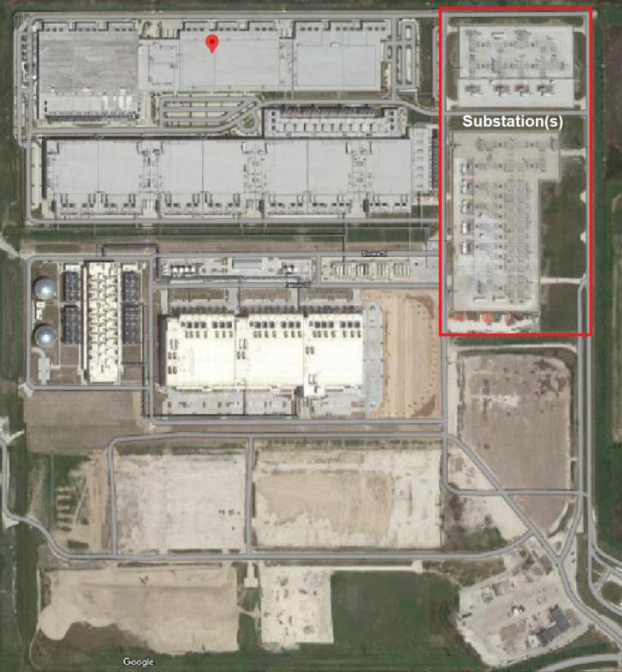Google is calling the data center workplace safety event (what many are calling an arc flash, data center fire, or data center explosion) that injured three workers on Monday, August 8 at the firm’s Council Bluffs, IA data center campus, an electrical incident.
While Google tells Data Center Knowledge the electrical incident and the firm’s recent outage of their Google search and Maps services are not related, both incidents occurred on the same day, within hours of each other. We created this timeline of events to chart the sequence of incidents that affected both users and workers on Monday, August 8 and the subsequent fallout on Tuesday, August 9:

All three injured workers are in stable condition, according to a Google spokesperson.
Below you'll find an image of the likely location of the electrical incident according to Omdia's data center research analysts. The section outlined in red is said to be the location of the data center's substation(s).

Image credit: Omdia Data Center Building Tracker
Data center fire mitigation integrates worker safety training and PPE
Whether your digital infrastructure resides on-prem or in a colo, worker safety provides unique challenges. To address the specific risk of fire explosions due to arc flashes, Omdia senior principal analyst Moises Levy, PhD shares key insights: “To avoid human injuries, we need to protect personnel from arc flash hazards by using appropriate personal protective equipment (PPE), remote operation of the equipment, periodic maintenance and training, among others.”
As we move to a more strategic focus, forward-thinking data center operators focus on something called risk-informed fire protection or risk-informed data center engineering, according to Paul Amico, practice lead at Jensen Hughes.
The purpose of risk-informed efforts is to rank the likelihood of a fire scenario and then apply practical resources to its mitigation based on the level of probability and the fallout if an unfortunate incident should occur.
For instance, somewhat rare arc flashes can cause substantial risk to the lives of data center workers, as evidenced by the following video:
According to Amico, it’s important to engage in:
- Data collection on data center facility layout
- Code review of local, national and possibly international safety requirements
- Hazard identification (HAZID) to clear spot hazards and mitigate risks
- Fire risk assessment review and establishment of risk acceptability thresholds
- Comprehensive recommendations given the risk assessment results through a risk matrix
If you’d like to replicate this risk-informed version of fire protection, consider reviewing Amico’s full documentation here.
Considering the rising costs of data center fire mitigation
As you review your data center fire mitigation efforts, you may identify areas of opportunity for improvement. One consideration is the cost of upgrading gaseous suppression fire safety systems, according to Omdia senior analyst Amir Boubaker. This has to do with both the increased need for data during the recent COVID-19 pandemic and for buyers using U.S. dollars the current levels of inflation which have increased the costs of fire safety, according to Boubaker.
“End users in this field will not want to get caught out while many others are already investing in these systems,” said Boubaker.
Source
Omdia, Fire Detection & Suppression Equipment Report – 2022 Analysis
The Guardian, "Google outage: tech giant apologises after software update causes search engine to go down"
SFGATE, "Google says data center 'electrical incident' unrelated to Monday's Google outage"




